Morels: where to find them?
3 years ago · Updated 6 months ago
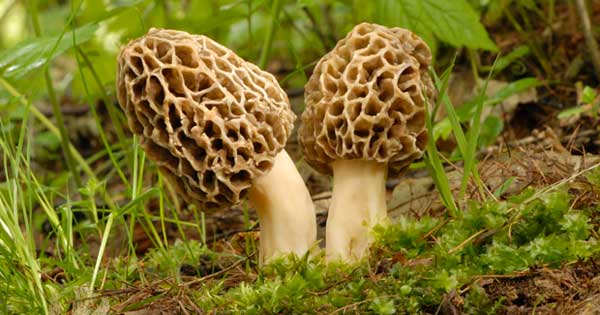
The mushroom species we love to hunt for the most
Morels, morels, morels, or morels are perhaps the mushroom species that we love to search for the most as mushroom enthusiasts. In addition to having an unusual shape compared to other mushroom species, with their distinctive cap with honeycomb-like cavities, they appear in the spring. This is when the mountains are at their most beautiful and green.
Tips for finding morels
Here are a few tips to help you find morels this year. In some areas, there has been very little rain, but in others it has rained. Look for areas with more moisture and, with a little luck, you will be able to find them.
Capricious morels
Morels are one of the most sought-after mushrooms by wild mushroom pickers, either because of their unusual shape or because they are one of the first species to appear in spring.
However, it is important to know that morels, as they are also known, do not grow throughout the forest. They are very capricious and only appear in specific places, although they do return to the same place every year, so once you have located a morel spot, you will know that every year, if conditions are favorable, you will be able to find morels there.
Would you like to buy morels for cooking? We recommend our section of gourmet products made with these delicious mushrooms. Enjoy the intense flavor of morels
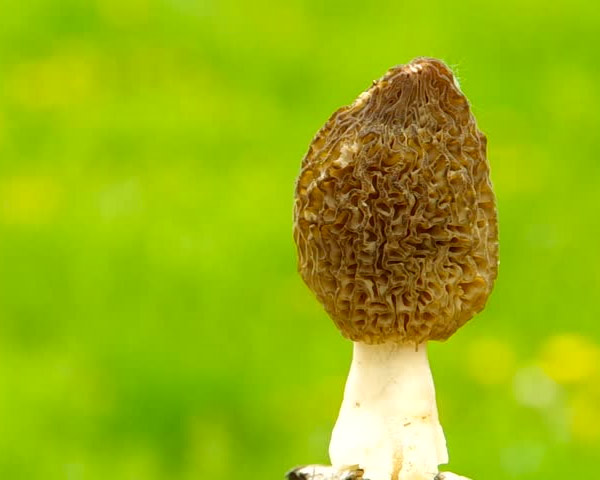
To successfully find morels, the first rule to keep in mind is that these mushrooms are completely unpredictable and capricious, so they can appear where you least expect them.
Despite this, we will give you some guidelines to help you find them successfully
Monitor the temperature
Morels are very delicate and demanding in terms of temperature. They only start to emerge when temperatures are around 15º at midday and around 5º at night. You can use a soil thermometer like this one to measure the temperature of your mushroom plots. Morels start to appear when the soil temperature is between 8 and 10º
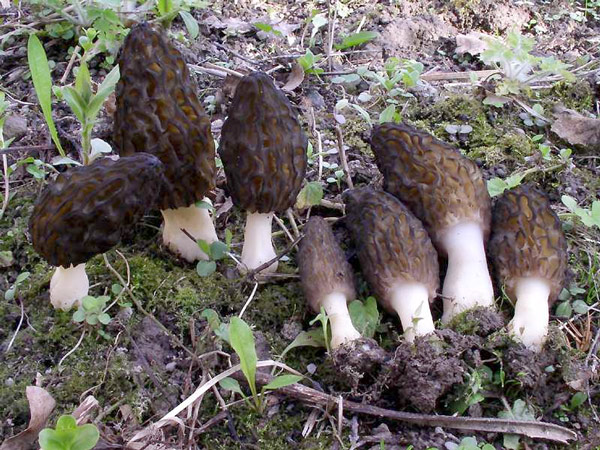
Keep a close eye on your setales
Once you have found a place with morels, you will need to comb the area thoroughly and slowly follow the trail. In general, morels have a flowering cycle of 2 to 3 weeks in each area. After this period, flowering usually stops, although this depends greatly on environmental conditions, temperatures, wind, and especially humidity. If we come across a good setal but the morels are small, it is best to return in a few days. You'll see how much they've grown!
Forest edge alert
The edges of the forest are more exposed to the heat of the sun, and morels love it. Start looking on the south-facing edges at the beginning of the season and move north as spring progresses.
Look for brushwood
If we find a damp area with clearings in the forest and plenty of light, with a carpet of grass and lots of organic matter, we should focus on the edges of this area. Morels love brush such as boxwood, creeping juniper, juniper, and rose hips.
Pines, especially firs, are also good. If we find a mixed forest of firs and pines, we should start with the fir areas. We are sure to find good specimens of morels!
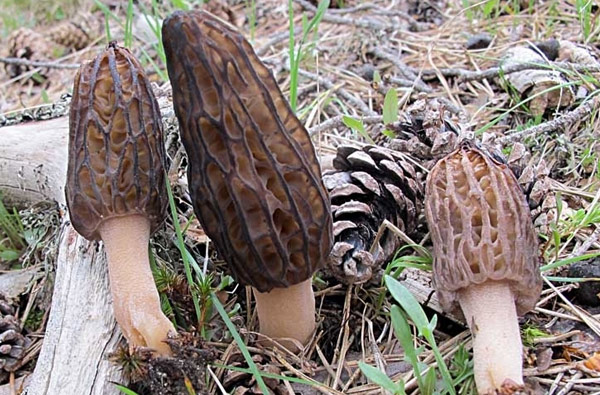
Soil characteristics
The soil is composed of three mineral particles of different sizes, from the coarsest to the finest: sand, silt, and clay. Morels prefer loamy soils, located between the finest gravel and clay. They appear more frequently and in greater numbers.
This type of soil can be found on riverbanks and streams. We must also take into account that this type of soil is more common in areas with gentle slopes that are prone to sedimentation.
Whether round or elongated in shape, morels can generally be found in sunny locations with soils rich in organic matter. They also grow on the banks of streams and rivers.
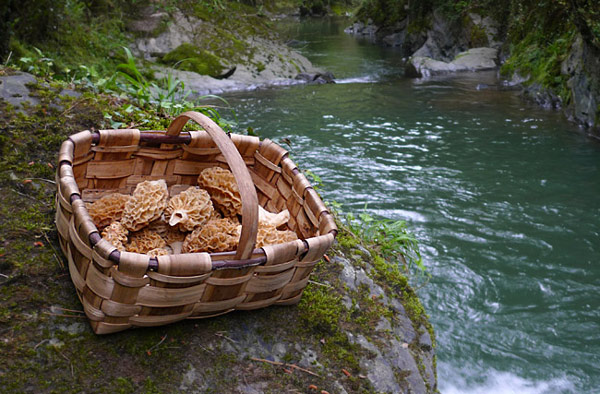
Tilled soil is ideal for morels
Morels love areas with tilled soil and branches.
This is one of their favorite places. Soil disturbed by animals or crops is ideal for morels. Look in areas where forestry work has been carried out, where heavy machinery has been used to drag logs, and where the soil has been disturbed. In these areas, you may be pleasantly surprised.
Also look along riverbanks that have been flooded and where soil has settled.
We should avoid going too deep into forests, especially if they are dense and closed, as we will almost certainly not find a single morel mushroom there. We should look for areas in the forest with clearings, with high humidity, and open spaces. Also on grassy forest edges. If we find a cleared area in the forest, we should search there, as it is very likely that we will find a specimen.
In burnt ground
This is not the ideal landscape for going out into the mountains; no one likes to see the mountains like this. But it is a fact that morels choose this type of area to appear in abundance in the two years following a fire.
After the rain, look for morels
Morels love rain. A good spring rain makes morels grow. Keep an eye on the temperature we mentioned above and go out looking for them in the days following a rain. Take note!
Know the terrain
It is important to know where morels grow and to visit the woods before and after picking them. Observe the plants, flowers, and fruits that can be found in the area and learn when they appear. By observing the terrain and taking notes, you will be able to identify morel blooms with the help of the vegetation.
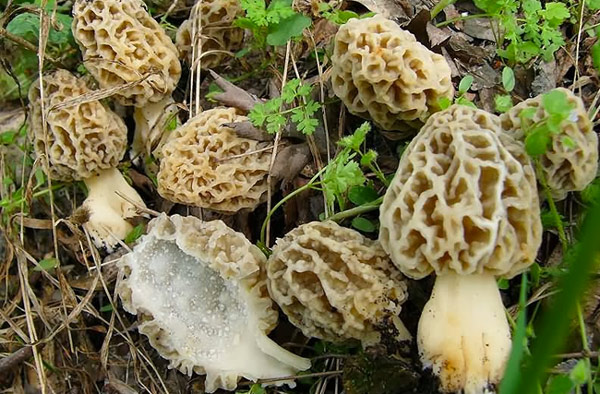
Where should you look for morels?
Whether round or elongated in shape, morels can usually be found in sunny spots with soil rich in organic matter. They also grow on the banks of streams and rivers, in clearings in coniferous forests, and especially on the edges of forests, along paths, and in areas that have been cleared of brush. They love areas with loose soil and fallen branches.
Therefore, we should avoid going too deep into the woods, especially if they are dense and closed, as we will almost certainly not find a single morel mushroom there. We should look for areas in the forest with bright clearings, with high humidity, and open spaces. Also in grassy forest edges. If we find a clear area in the forest, we should search there, as it is very likely that we will find a specimen.
Keep in mind that morels, cagarrias, or murgolas are one of the most sought-after mushrooms by mushroom hunters. Don't pay too much attention to the areas they point out to you, and if you want to ensure a good harvest, don't stay in areas that are easy to access.
We should look for places that are not very frequented and, once there, if they meet the characteristics we have mentioned, we should walk slowly up and down but without straying too far from the area we have located. We are sure we will find one!
If we find a damp area with clearings in the forest and plenty of light, with a layer of grass and lots of organic matter, we should focus on the edges of this area.
Plants associated with morels
Morels love scrub such as boxwood, creeping juniper, juniper, and wild rose. They also like pine trees, especially firs. If we find a mixed forest of firs and pines, we should start in the fir areas. We are sure to find good specimens of morels!
Once you have found a patch of morels, you should comb the surrounding area thoroughly and continue tracking slowly. In general, morels have a hatching cycle of between 2 and 3 weeks in each area.
After this time, flowering usually stops, although this depends greatly on environmental conditions, temperatures, wind, and, above all, humidity. If you find a good patch but the morels are small, it is best to come back for them in a few days. You will see how they have grown!
Go out into the mountains to look for them
Keep in mind that morels are one of the most sought-after mushrooms by mushroom hunters. Don't pay too much attention to the areas that have been recommended to you, and if you want to ensure a good harvest, don't stay in easily accessible areas. We should look for places that are not very frequented and, once there, if they have the characteristics we have mentioned, we should walk slowly up and down, but if we stray too far from the area we have located, we are sure to find some!
Ultimately, morels are by far the most capricious and delicate mushrooms in the entire fungal kingdom, with cases where not a single one has appeared for a week because sudden changes in weather conditions have stopped them from sprouting.
If you have been able to harvest a few specimens and want to know how to store and cook them, we recommend this article on our blog.
We hope that with these tips, you will be able to find some good specimens of morels.
Good luck with them, and don't forget to send us your photos.

Te pueden interesar